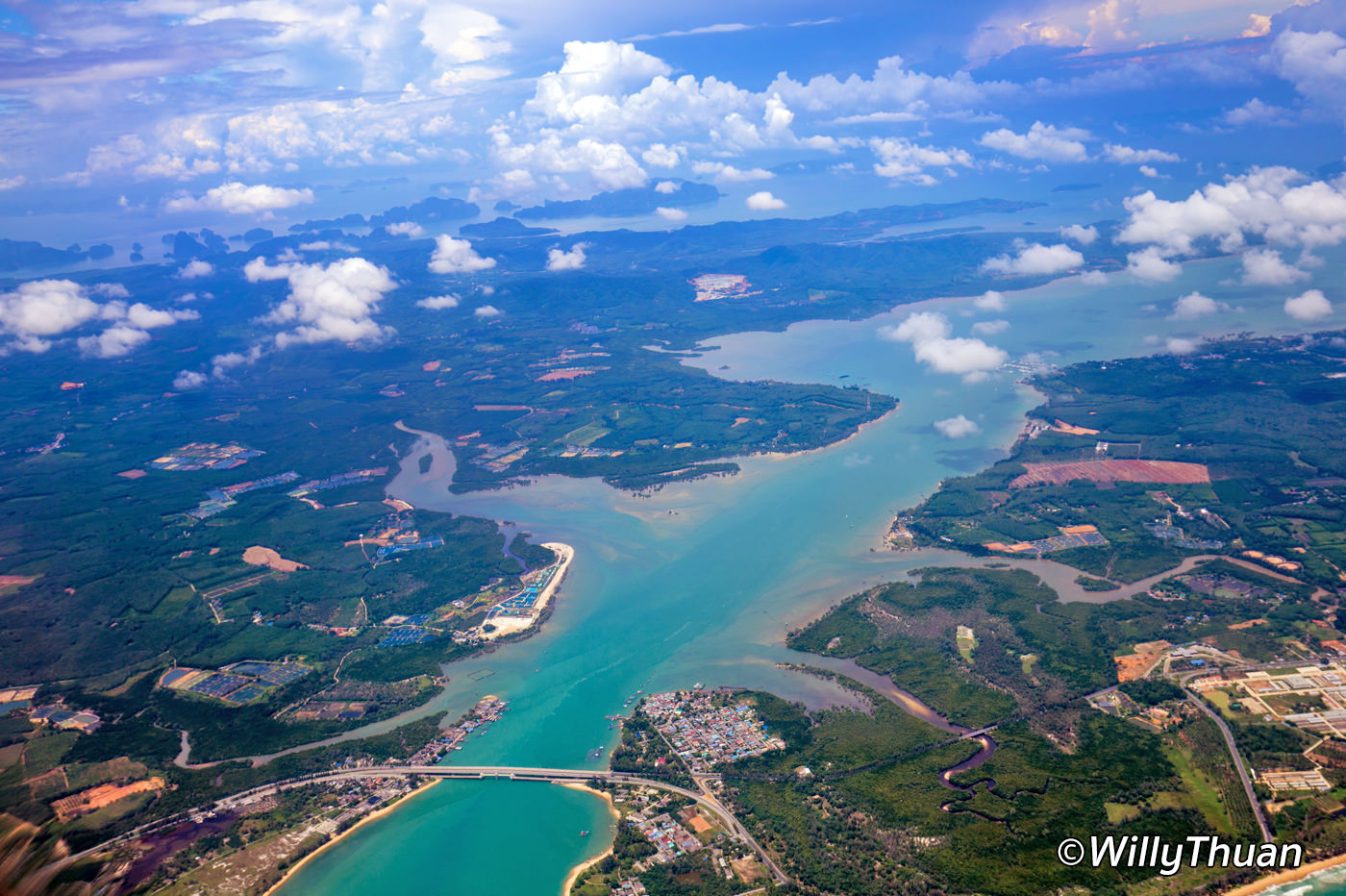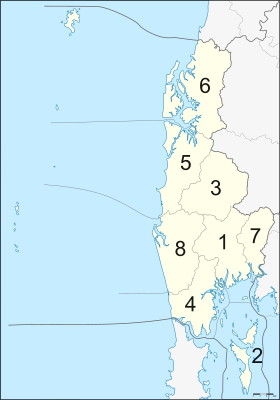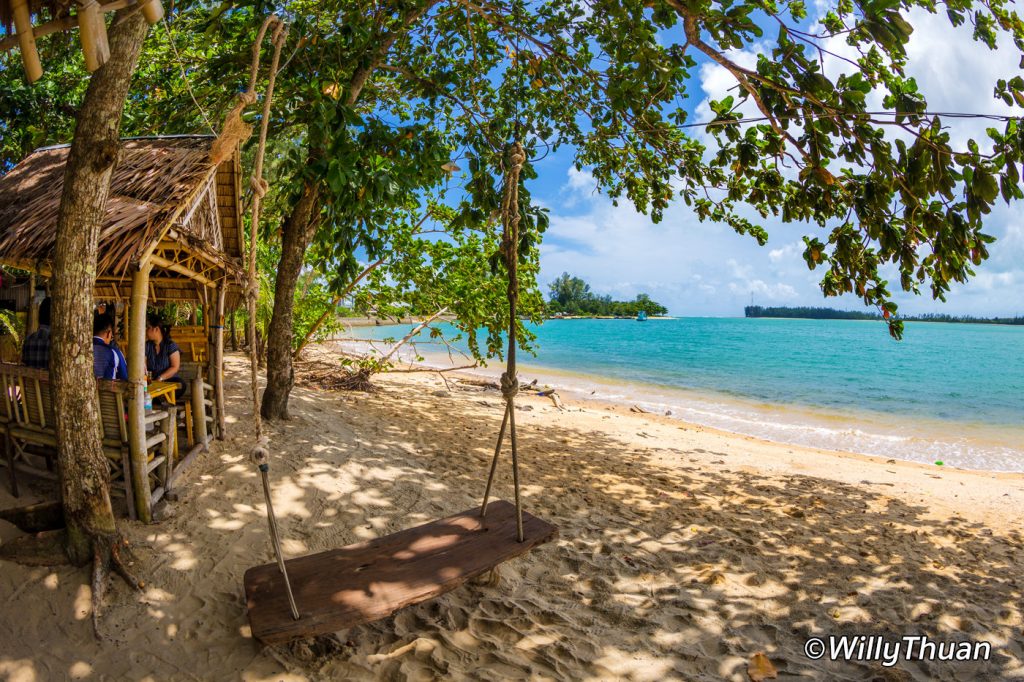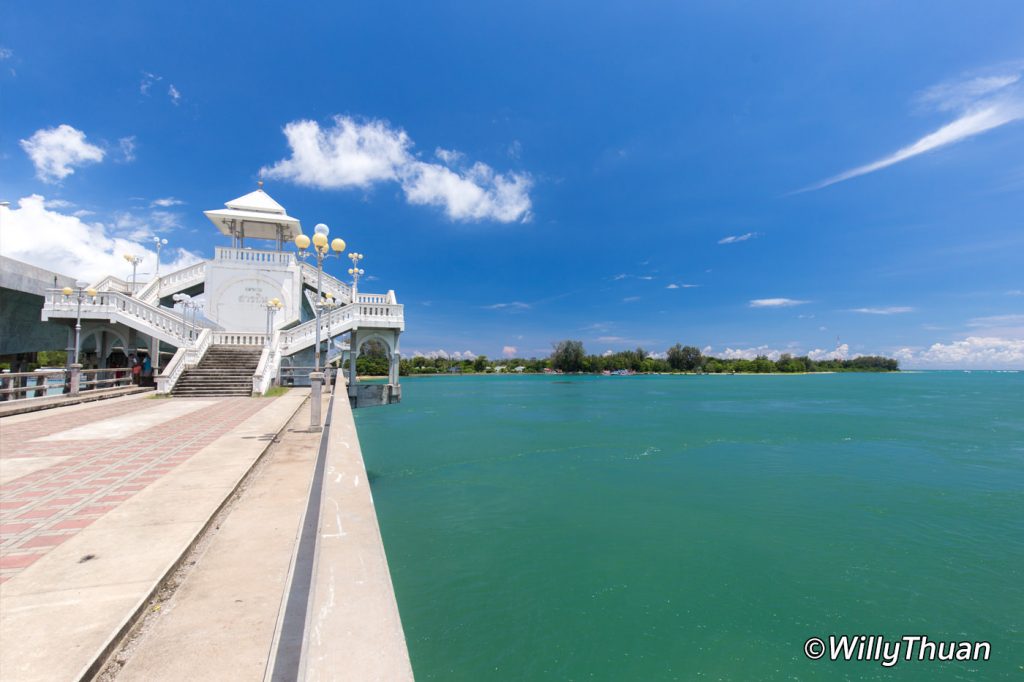My wife and I have been thinking about buying land in rural Thailand and growing palm as a cash crop. Thus, we made a few inquiries and make a trip to the depths of Phang Nga province in Southern Thailand to investigate.
For those of you unfamiliar with the Geography of Thailand, Phang Nga province is about a 90 minute drive from Phuket, nestled deep in lush hilly jungles of the south.
 |
| Sarasin Bridge |

By the way, as most foreigners making this trip are coming from Phuket, I'll let you into some local knowledge. While crossing Sarasin Bridge from the Phuket into Phang Nha, make a you turn as soon as you get off off the bridge and make your way to the water front. Here you'll stumble upon Rimpan Restaurant which serves amazing, authentic southern Thai cuisine. I've been stopping here for years, and it never disappoints. I hope you like spicy food as this part of Thailand has the best spicy food in the world!




Anyway, don't get me sidetracked with gastronomy, especially of the Thai nature. This is an investing blog post remember?
After feeding and watering we drove north on the upgraded road. Years ago, this drive was for the intrepid adventurer with a near-death experience every few 100 meters, but now it's a smooth drive all the way to Khao Lak.
We stayed for a night in Khao Lak. If you never been here before, it has an old-school charm when compared to Phuket and feels like you have just exited a time machine twenty five years ago. Yes, it's set up for tourists, but it's is still oozing with southern Thai charm.
The beaches are world class, and with international airports still closed at the time of writing, I had the place all to myself. I joke you not... My wife and I were the only people in our hotel and on the sand.

After some phone calls we drove to the north east of Phang Nha provice to Kapong district to view land. Our contact was a retired policeman who was more than happy to show us various plots of land and share some of the local gossip at the same time.
Kapong feels like the end of the earth with its verdant hills and scantly clad residents. A feeling of calm washed over me as we drove off-road down bumpy tracks surrounded by the music of the jungle. Families huddled close together inside metal huts to our left as we ventured deeper into the dense greenery. A young boy dressed in his boxers smiled the biggest, toothiest smile I have ever seen when he saw me through the window. This place is unseen Thailand, real Thailand, a place steeped in centuries old tradition and superstition.
My wife and my interest in all this lies in cultivating palm which, if done right can generate a tidy profit. We looked at three pots and it's still cheap here.
The first plot was 12 rai (about 5 acres) of flat, mature palm plantation with a family of workers already living on the land. It was priced at 2 million THB or about $89,000 Singaporean. After a few quick calculations, I worked our that you could make about 15,000THB per month ($700 Singaporean)
Here's a pic of plot 1:
The second plot was was thick jungle and had a lovely view, but I passed on this one immediately because of the Sisyphean task of clearing and planting etc.
Here's a pic of the second plot:
The third plot was sloped and commanded a wonderful view from the top of it 35 rai (about 14 acres)
Here's some pics of the third plot:
What beautiful countryside, don't you agree?
Imagine yourself spending a few days their a week breathing in the fresh air and listening to the sounds all around. Perfect eh?
This plot was price at about 4 million THB or $170,000 Singaporean. The land was cultivated the year before and contained about 500 new palm trees. The fruit from these will be ready to sell in another 12 months time and the land could potentially yield about 35,000THB or 40,000THB per month ($17000 Singaporean)
I'm sure you'll agree the returns look great on paper, don't they. But they don't come without considerable risk.
Risk 1: Fake documents
All the plots of land are in the middle of nowhere and if the land deeds are fake, then what are you going to do? After all, your agent is a retired local policemen, so whose door are you going to knock if the deal is a bluff? Good luck!
Risk 2: Bad workers
You will need a family of workers you can trust, and locals informed me that the going rate is 60/40 on profit in favor of the landowner. This is easy to consider in an idea world with squeaky clean mindsets, but you're not in Singapore now. Real poverty exists in every direction and many could try to take advantage of an absentee landlord before they disappear into the jungle. This is a tricky problem to solve and some mutually-beneficial relationship building is required .
Risk 3: The price of palm
Palm is not going to make you rich over night, but can provide a decent side income if done right.
That said, the price does fluctuate - as the locals will tell you immediately. So, this is a real worry.
Risk 4: Theft
Remember your plot is in the middle of the jungle without mains electricity or water supply. It'll be dark at night and don't expect your workers to brandish arms and fight any intruders. The best you could expect is a phone call the following morning once you land has been stripped of palm. The risk of losing a few kgs is high, but losing to lot is low. It might be an idea to employ an armed guard for a fixed monthly rate, but tell him not to be to trigger happy to avoid a war with the locals.
So there you have it. These are the main risks I see after examining the land.
After surveying the three plots, we made our way make to Khao Lak and had some beers on the beach to mull the trip over.
When thinking about this investment the big question is the following? Is it worth the risk and effort when you could invest in a company that does something similar but on a larger scale such as Olam or Wilmar?
The more my wife and I though about this the more we start gravitating towards the latter.
Olam has a proven track record internationally, is Temasek backed and has a juicy yield of almost 6% at the time of writing. Its drawbacks are its burdened by a heavy debt.
Wilmar, we already own a healthy chunk of. It's a well run company with decent growth potential both for capital gains and dividend.
Final thoughts...
My wife and I drove back to Phuket convinced that we could make the land work, but unsure if we would be any better of in the long run when we could invest in stocks instead. Yes, of course, the land would diversify our portfolio further, but at what cost to our passive income? Also, the land is so deep in the jungle that it's unlike to go up in value anytime soon, and would be difficult to sell.
Thus, as we stood watching the sunset from Sarasin Bridge once again, we clinked or beers with our minds' made up.
The land can wait for another time. Wilmar or Olam it will be.
SDI










No comments:
Post a Comment